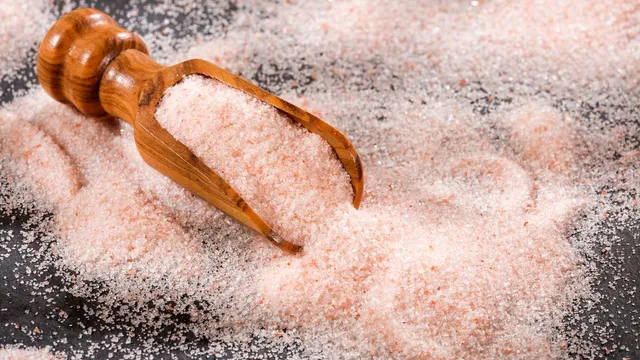The month of Sawan is very special for Hindus. It is dedicated to Lord Shiva, and many people observe fasting (vrat) during this holy time. Fasting is not just about skipping food but also about eating clean, pure, and sattvik (spiritual) food. One major change people make during Sawan fasting is replacing regular salt with Sendha Namak (Rock Salt). But why is Sendha Namak preferred? Let’s understand its spiritual importance and health benefits.
What Is Sendha Namak?
Contents
Sendha Namak, also called rock salt or Himalayan pink salt, is a type of salt found in natural salt mines. It is not made by drying sea water like common salt. Instead, it is mined from the rocks formed millions of years ago. It is pure, natural, unprocessed, and contains many essential minerals like calcium, magnesium, and potassium.
Why Is Sendha Namak Used During Sawan Fast?
1. Spiritual Purity
According to Hindu scriptures, during fasting or vrat, one should eat only pure and sattvik food. Regular salt, known as table salt, is considered tamasic (impure) as it goes through chemical processing. Sendha Namak, on the other hand, is believed to be natural, untouched by chemicals, and pure for spiritual activities. That’s why it is allowed during Ekadashi, Navratri, Janmashtami, and Sawan fasts.
2. Approved by Ayurveda
Ayurveda recommends Sendha Namak because it balances the three doshas – Vata, Pitta, and Kapha. It helps in digestion and keeps the body cool, which is especially helpful during summer months like Sawan.
3. Devotional Reasons
During Sawan, people offer fruits, milk, and sattvik food to Lord Shiva. Sendha Namak is used in such food because it is considered fit for the gods. It is believed that using rock salt pleases Lord Shiva and helps in gaining his blessings.
Table: Sendha Namak Vs. Regular Salt
| Feature | Sendha Namak (Rock Salt) | Table Salt (Regular Salt) |
| Source | Natural Rock Mines | Sea Water |
| Processing | Unprocessed | Chemically processed |
| Use During Fasting | Allowed | Not allowed |
| Taste | Mild, not very salty | Sharp salty taste |
| Minerals Present | Magnesium, Calcium, etc. | Mostly Sodium only |
| Spiritual Value | High | Low |
Health Benefits of Sendha Namak
1. Improves Digestion
Sendha Namak helps stimulate digestive enzymes and improves appetite. During fasting, when food intake is low, digestion becomes weak. Rock salt helps keep the digestive system active.
2. Boosts Metabolism
It helps the body to maintain a healthy water balance, promotes metabolism, and supports the functioning of thyroid glands.
3. Good for Skin
Because of its detoxifying properties, Sendha Namak is used in many Ayurvedic skin treatments. It helps to cleanse the body from inside and gives a natural glow to the skin.
4. Reduces Stress and Fatigue
Magnesium in rock salt is known to relax muscles and calm the nervous system. It is also used in salt baths to relieve body pain and fatigue during fasting.
5. Regulates Blood Pressure
Unlike regular salt, Sendha Namak does not raise blood pressure too much. It helps maintain a healthy heart and improves blood circulation.
How to Use Sendha Namak During Sawan
- Add to fruits and salads eaten during fasting
- Use in sabudana khichdi, kuttu puri, singhara halwa, etc.
- Make buttermilk or lemon water with rock salt for energy
- You can also store it in a grinder and use as regular salt daily
Final Thoughts
During Sawan fasting, people aim for physical purity and spiritual connection with Lord Shiva. Replacing regular salt with Sendha Namak is a small but meaningful step toward maintaining this purity. It is not just a religious practice, but also a scientific and health-friendly choice. Whether you are fasting or not, adding Sendha Namak to your diet can bring many positive health benefits.







